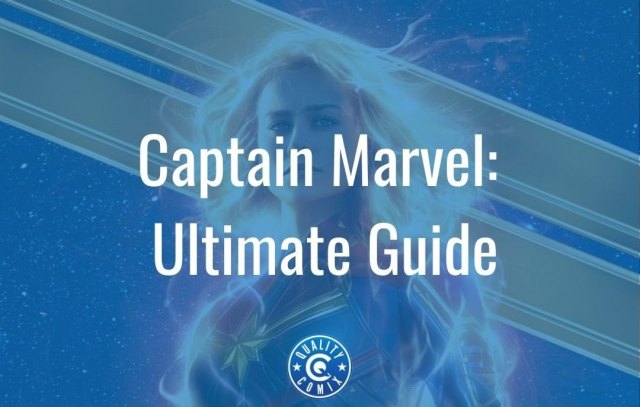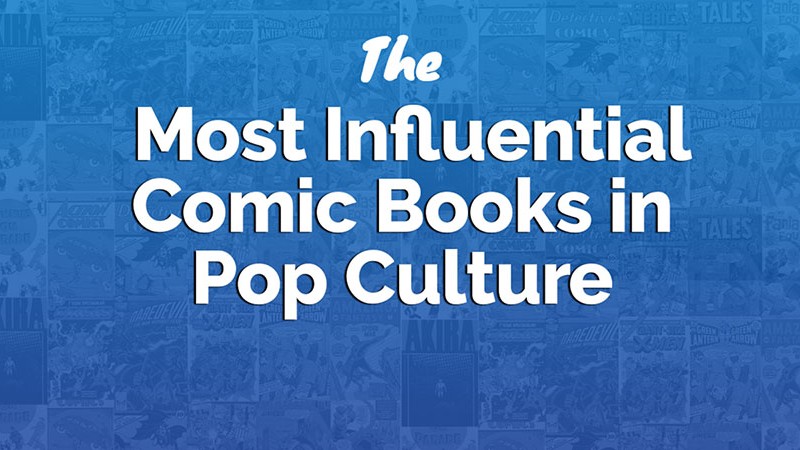
Putting together a list of the most influential and best comic books of all time requires careful thought. With so many great books published over the years, it is hard to keep the list short. Few could argue the ones that did make the list didn't shake up pop culture tremendously.
Here are our picks for the most influential comic books of all-time:
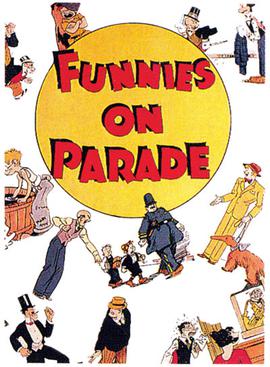
1933 - Funnies On Parade
Funnies On Parade wasn't the first-ever published comic book, but the title debuted the 6 5/8 x 10 1/4 inches format that became the standard for all comics. Although the book only presented reprints of newspaper strip comics, sales were strong. Other publishing houses went forward with monthlies featuring original material, and an industry was born.
Barry Pearl, Barry's Pearls of Comic Book Wisdom
Funnies on Parade in 1933, is important because it was the invention, and first appearance, of the comic book. Before that time, a few companies, such as Couples and Leon, published books with a cardboard cover that reprinted newspaper comic strips such as Little Orphan Annie.
Working for Eastern publishing, Harry I. Wallenberg, Maxwell Gaines, and George Janosik printed a newspaper size page that they folded down to make an eight-page publication about the size of a modern comic book. Instead of selecting one series, they placed multiple comic strips in the publication. Instead of being sold, the ten thousand issue run was used as a premium for the Procter & Gamble soap company. It was very successful and lead to many promotions. William Gaines would later be instrumental in the creation of many comic book characters and the publisher of EC comics. In 1934 he published the 36-page Famous Funnies. This was the first comic book to be put on the newsstands. This also contained reprints of famous strips. It sold out! Slowly then, many pulp magazine publishers began publishing comics featuring newspaper reprints. New material began to replace reprints in 1935.
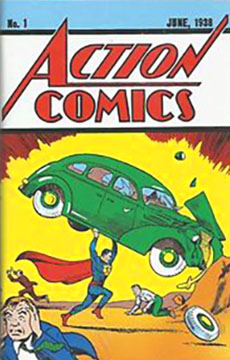
1938 - Action Comics #1
The arrival of Action Comics first issue forever changed the face of pop culture. The issue heralded the arrival of Superman, a character that quickly rose to the status of an entertainment icon. It would be difficult to imagine the comic book industry becoming as successful as it did without the "Last Son of Krypton" selling millions of copies per year in the 1930s. From an industry growth perspective, Action Comics #1 may be the best comic books of all time.
Allen Stewart, Hall of Heroes Museum
Action Comics #1 features the first appearance of Superman cover date June 1938 but came out in newsstand's in May 1938. This amazing character created by Jerry Siegel and Joe Shuster influenced what would become thousands of superheroes and millions of fans in the decades to follow. Action Comics #1 is the birth of the superhero and undeniably the most influential comic book in history. Superman is not the first costumed hero. The Phantom came out 2 years previously in 1936 but Superman is the first superhero with powers and abilities beyond mortal men. I could imagine being a kid in this era and seeing this comic on the newsstand with what would have been considered a circus strongman with a cape holding up a car. I would have had to go hawk newspapers or find some soda bottles to turn in to buy a copy immediately.
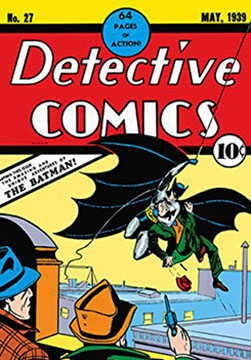
1939 - Detective Comics #27
The first appearance of Batman delivered an edgy, dark character with a more ominous yin to Superman's yang. Batman helped usher in a more adult approach to comics, one closer to the pulp books and radio shows popular at the time. While the Caped Crusader would occasionally become campy, the shadowy character generally stayed true to Bob Kane's original interpretation.
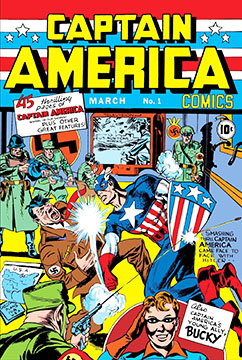
1941 - Captain America Comics #1
Captain America rode a wave of success during World War Two to the tune of 1 million copies per month. The book's success didn't last long, but the patriotic characters of Captain America and sidekick Bucky maintained an appeal that proved highly influential decades later during Marvel Comics' heyday. Captain America became the right character at the right time thrice: during the Golden Age, the Bronze Age, and the age of the Marvel Cinematic Universe.
Allen Stewart, Hall of Heroes Museum:
Captain America Comics #1 features the first appearance of Captain America cover date March 1941 but came out in newsstands in January 1941. Captain America #1 showed Cap punching out a real-life villain trying to take over the world Adolf Hitler. Interesting from a historical perspective is the comics release date almost a year before the attack of Pearl Harbor and The United States entering the war. It almost makes you wonder if maybe FDR had a hand in helping to create the character since he was trying to get the country behind him to support entering the war? Captain America created by Joe Simon and Jack Kirby was the most popular comic character during WW II. Captain America comics were read by more soldiers in the trenches than kids on the streets. He was a soldier like them fighting the Nazi's and the Japanese. Cap wasn't invulnerable like Superman he could be shot and only had his shield and quick reflexes to stay alive. Soldiers related to the character unlike any other in comic book history.
Will Murray, Adventures in Bronze
Until Timely Comics released Captain America Comics at the end of 1940, every superhero debuted in an anthology comic before breaking out into their own title. Joe Simon and Jack Kirby's Captain America burst fourth in his own magazine from the start, the first issue offering four blockbuster C. A. stories. More importantly, his adventures were presented in a cinematic style that verged on three-D. Most features were modeled after the newspaper comic strips of that era. Exciting, but flat. After Captain America, many rivals copied the Simon and Kirby look––including the Shield, a patriotic superhero who predated him soon aped their uniquely kinetic style slavishly. New creative teams are still copying them in the 21st Century.
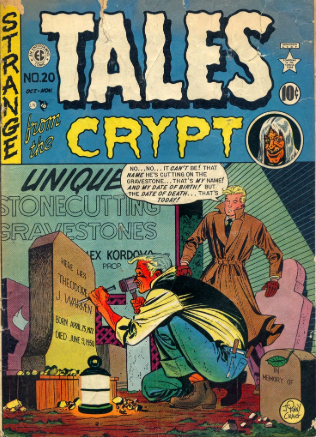
1950 - Tales from the Crypt #20
By the late 1940s and early 1950s, superheroes lost their appeal, and comic books focused more on crime and horror. Tales from the Crypt actually debuted at issue #20 as the previous 19 issues were titled Crime Patrol and then The Crypt of Terror. Tales from the Crypt was an enormous hit for E.C. Comics and presented some of the very best horror fiction of the era and influenced novelists, filmmakers, and, of course, other comic book publishers. The title became a victim of its success as political pressure forced E.C. out of the market except for its humor book: MAD.
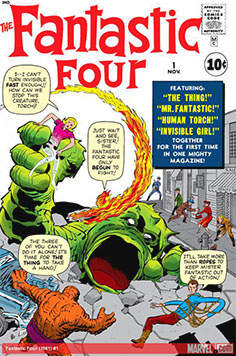
1961 - Fantastic Four #1
And the Marvel Age of Comics arrives with an incredible bang. Stan Lee and Jack Kirby threw all comic book conventions and cliches on their head by upending how heroes were "supposed to act" and crafted characters who weren't always perfect and didn't always get along. Most importantly, the title's success encouraged Stan Lee and other collaborators to continue in the same direction when creating scores of other memorable Marvel characters.
Alex Grand, Comic Book Historians YouTube and podcast co-host:
Fantastic Four 1, 1961 started off the Marvel Age with it being the first of many comics that would become the Marvel Universe and is one of the rare origin stories that didn't show any characteristic costume. Unusual in its day, the main traits were that it directly linked into the Space Race with the Russians with the FF flying to Mars and running into life-changing power granting technical difficulties and that the powers could dangerously scar them I.e. The Thing. It was more of a comic with freaks and monsters that chose to do heroic things from necessity and that imperfect heroism was tested on a monthly basis. The characters were flawed unlike the DC characters, they argued and were imperfect humans with pain and regret establishing them quickly as a team of an anti-hero for their time. Each story would bring in new characters in which Stan Lee's neurotic and romantic wordplay along with Jack Kirby's visual cosmic odysseys were used as stepping stones to create a pop cultural revolution that would have Marvel Comics overtake DC as the number 1 comic company close to 10 years after its inception, and a movie Universe that is the current number 1 film franchise.
Will Murray, Adventures in Bronze
The World's Greatest Comic Magazine came about when Marvel publisher Martin Goodman instructed chief writer Stan Lee to come up with a superhero team in the mold of DC's top-selling Justice League of America. Lee itched to write comics for an older audience. Artist Jack Kirby, who had created a DC hit called Challengers of the Unknown, only to lose the gig in an editorial dispute was eager to show he could still create hit comics. The Baby Boom had produced a new crop of potential comic book readers. In April 1961, Cosmonaut Yuri Gagarin became the first man in space. Everything came together to result in The Fantastic Four––a Space Age title that threw away all the comic book cliches to portray real people as superheroes, inaugurating the Marvel Age of Comics. Once again, Jack Kirby showed that revolutionary comics were still possible while Stan Lee proved they didn't have to be written for ten-year-olds. Out of this single title, the Marvel Universe emerged to become a multi-billion-dollar entertainment empire.
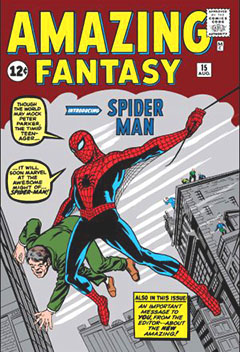
1962 - Amazing Fantasy #15
By creating Spider-Man in the form of a teenager who suffered everyday problems common to other adolescents, Stan Lee and Steve Ditko scored huge with comic readers aging out of DC Comics' sphere. The two also created a character capable of rivaling Superman, Batman, and Captain Marvel/Shazam in terms of popularity. For decades, Spider-Man served as the flagship title and number one character for Marvel Comics. Without Spider-Man, Marvel never would have reached the heights it did during the 1960s and beyond.
Alex Grand, Comic Book Historians YouTube and podcast co-host:
The first appearance of Spider-Man was hugely influential first because although it had the classic sci-fi based superpower, it established that a teenager can be their own hero and not be a sidekick. Anomalous in that the tragedy of Uncle Ben's death is directly relatable to the main characters careless neglect of holding back the burglar. This complex psychological guilt was a huge driver for the character's heroism which occurred as a learning mistake and not because he is intrinsically perfect. His heroism derived from his initial character flaw. The panels move the story along, brief and poetically executed by Ditko with the least extraneous clutter as possible and the same can be said for Stan Lee's dialogue which sucks the reader into the basic definable humanity of what it means to be Spider-Man and the lessons this teenager takes into is adulthood, With Great Power comes Great Responsibility. The iconic costume by Ditko would become Marvel's characteristic insignia that would rival DC'S Superman logo. We all recognize Spidey!
Barry Pearl, Barry's Pearls of Comic Book Wisdom
The origin of Spider-man has influenced so many comics, with new and old comics we, today might not see it as unique. But unique it was. First, in the early 1960s, super-heroes often had teenaged sidekicks that young people could identify with. Stan Lee wanted his readers to identify with the main character, so Spider-Man was a teenager. Also, back then, heroes were boy scouts, they got their powers, as Hal Jorden (Green Lantern) and Barry Allen (The Flash), who had good jobs, and immediately wanted to fight crime. Not here Peter Parker lived closer to reality and his first thoughts were how to make money, not solve crimes. When had we seen a super-hero look for a job? The motivation for Peter becoming Spider-Man was redemption; his inactivity caused the death of his uncle. The theme of redemption is not just used at Marvel, with Iron Man, Dr. Strange, Daredevil and others but was re-written into the DC Universe. In the Dark Knight movie trilogy, young Bruce Wayne insists on leaving the theatre and then his parents are killed. The guilt is a clone of the Spider-Man story. People quote Shakespeare and people quote lines from the Godfather, but they never quoted lines from comics. Amazing Fantasy showed how important dialogue was in a comic book story. "With great power, there must also come -- great responsibility!" has been used by President Obama and the Supreme Court.
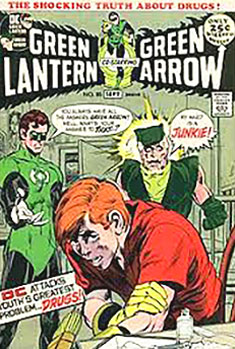
1971 - Green Lantern/Green Arrow #85
Readers experienced an incredible shock when Green Arrow's sidekick Speedy revealed his addiction to heroin. The book's poor sales never turned around, but the two-part "Snowbirds Don't Fly" story showed comic books could cover sensitive topics in a thoughtful, mature way. Scores of writers and artists drew influence from the "Hard Traveling Heroes" era of Green Arrow/Green Lantern.
Ted Ignacio, Pencil Ink Comics blog
While Marvel addressed drug abuse earlier in Amazing Spider-man, DC actually went further, making one of their (minor) heroes a drug addict. The cover features Green Arrows' troubled sidekick Speedy, along with his heroin-related implements. This is the first superhero in comics to succumb to an addiction. Amazingly, the cover and interior scene were approved by the Comics Code Authority. Perhaps Neal Adams' splendid and sophisticated artwork made the story more palatable.
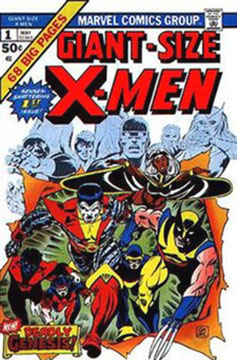
1975 - Giant-Size X-Men #1
Writer Len Wein and artist Dave Cockrum gained the freedom to revamp a heroic team whose book experienced horrible sales. The new team brought together Cyclops, Storm, Nightcrawler, Wolverine, and other characters that connected with disaffected youth somewhat similarly to what Spider-Man did more than 10 years before. The revamped version of the X-Men made a transition to movies that encouraged the massive superhero movie boom of the 2000s and 2010s.
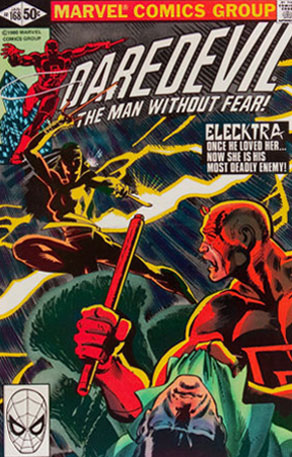
1981 - Daredevil #168
Frank Miller knew his audience, and he knew what hero to choose to explore his radical vision of the modern superhero. Although he started on the title with issue #158, #168 saw Miller gain complete control as both writer and artist. Miller's work on Daredevil helped drive Marvel Comics more in the direction of older, mature readers which, in turn, assisted in moving the comic book industry away from newsstand sales to the seemingly stable world of direct sales to comic book shops.
Ted Ignacio, Pencil Ink Comics blog
Although he began drawing Daredevil ten issues before, Frank Miller now takes over the writing as well. He subsequently introduces the assassin Elektra, while revealing a long forgotten romance between her and Matt Murdock. Marvel not only gains a strong new female character but added context and history to Daredevil's pre-heroic days. Miller would soon after add greater dimension to existing characters (Gladiator, Kingpin, Bullseye) and create new distinctive ones (Stick, Kirigi, the Hand).
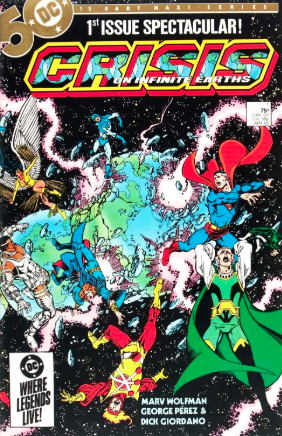
1985 - Crisis on Infinite Earths #1
DC Comics' editorial team became tired of dealing with continuity problems and reader questions such as "How can Clark Kent be Superboy when Superman's origin contradicts Superboy's existence?" The answer was multiple earths with different timelines, continuities, and alternate realities. A crisis arose when all these earths started merging, and DC Comics worked its way back to prominence by rebranding its hero line to connect with a changing, sophisticated readership.
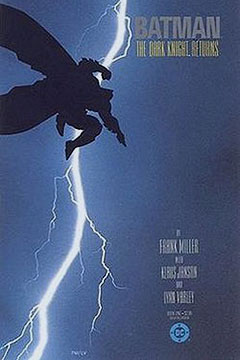
1986 - The Dark Knight Returns #1
Frank Miller took on the task of revamping a pop culture icon and did so to great perfection. The style Miller employed with this miniseries found guided modern on-screen and television versions of Batman turning them into box office gold. The book proved you could take incredible chances with a beloved character and not turn off readers.
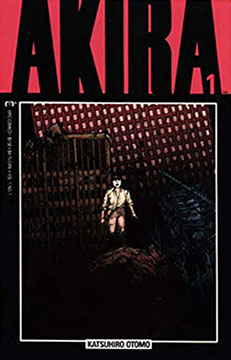
1988 - Akira #1
Arguably, Akira's English-language translation helped Japanese manga gain a large foothold in the American market. While not the first manga in the U.S., Akira was arguably the biggest hit up to that point. The title opened doors for more manga and related anime.
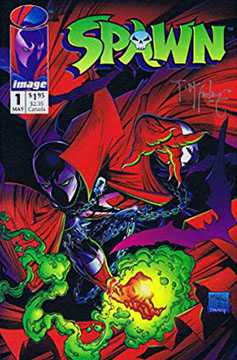
1992 - Spawn #1
Frustrated with Marvel Comics editorial decisions and creator-rights policies, Todd McFarlane and others formed their own company. Image Comics' flagship title, Spawn, produced a dark and violent character who could sell 1 million copies per month. Spawn's success was fleeting, but the book helped drive the creator-owned movement that eventually produced scores of incredible works at various independent publishing houses.
With thousands of titles published over the decades, arguments could be made to add 50 other titles to a most influential list. As long as the industry continues to cultivate top talent, the list may never end.

